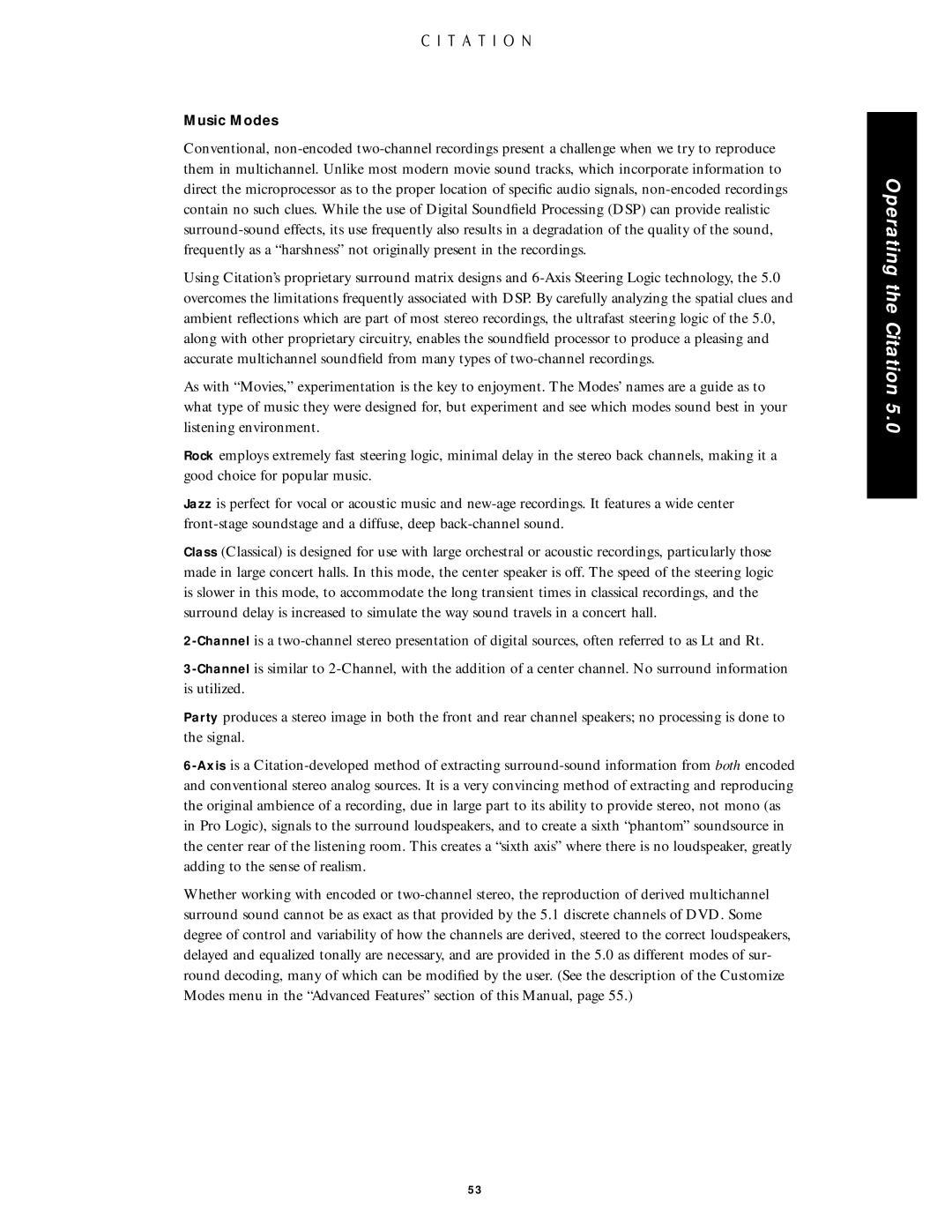Music Modes
Conventional, non-encoded two-channel recordings present a challenge when we try to reproduce them in multichannel. Unlike most modern movie sound tracks, which incorporate information to direct the microprocessor as to the proper location of specific audio signals, non-encoded recordings contain no such clues. While the use of Digital Soundfield Processing (DSP) can provide realistic surround-sound effects, its use frequently also results in a degradation of the quality of the sound, frequently as a “harshness” not originally present in the recordings.
Using Citation’s proprietary surround matrix designs and 6-Axis Steering Logic technology, the 5.0 overcomes the limitations frequently associated with DSP. By carefully analyzing the spatial clues and ambient reflections which are part of most stereo recordings, the ultrafast steering logic of the 5.0, along with other proprietary circuitry, enables the soundfield processor to produce a pleasing and accurate multichannel soundfield from many types of two-channel recordings.
As with “Movies,” experimentation is the key to enjoyment. The Modes’ names are a guide as to what type of music they were designed for, but experiment and see which modes sound best in your listening environment.
Rock employs extremely fast steering logic, minimal delay in the stereo back channels, making it a good choice for popular music.
Jazz is perfect for vocal or acoustic music and new-age recordings. It features a wide center front-stage soundstage and a diffuse, deep back-channel sound.
Class (Classical) is designed for use with large orchestral or acoustic recordings, particularly those made in large concert halls. In this mode, the center speaker is off. The speed of the steering logic is slower in this mode, to accommodate the long transient times in classical recordings, and the surround delay is increased to simulate the way sound travels in a concert hall.
2-Channelis a two-channel stereo presentation of digital sources, often referred to as Lt and Rt.
3-Channelis similar to 2-Channel, with the addition of a center channel. No surround information is utilized.
Party produces a stereo image in both the front and rear channel speakers; no processing is done to the signal.
6-Axisis a Citation-developed method of extracting surround-sound information from both encoded and conventional stereo analog sources. It is a very convincing method of extracting and reproducing the original ambience of a recording, due in large part to its ability to provide stereo, not mono (as in Pro Logic), signals to the surround loudspeakers, and to create a sixth “phantom” soundsource in the center rear of the listening room. This creates a “sixth axis” where there is no loudspeaker, greatly adding to the sense of realism.
Whether working with encoded or two-channel stereo, the reproduction of derived multichannel surround sound cannot be as exact as that provided by the 5.1 discrete channels of DVD. Some degree of control and variability of how the channels are derived, steered to the correct loudspeakers, delayed and equalized tonally are necessary, and are provided in the 5.0 as different modes of sur- round decoding, many of which can be modified by the user. (See the description of the Customize Modes menu in the “Advanced Features” section of this Manual, page 55.)

